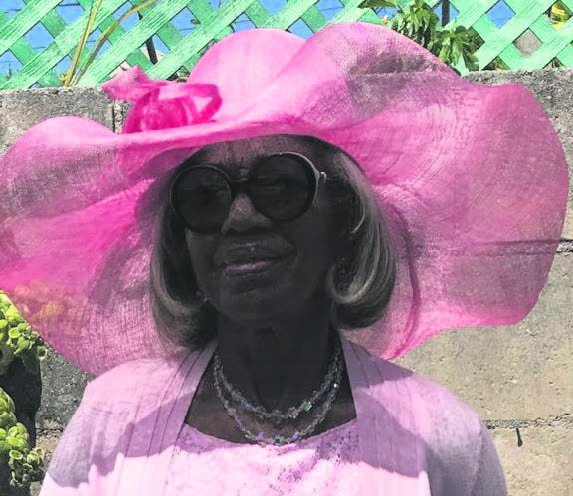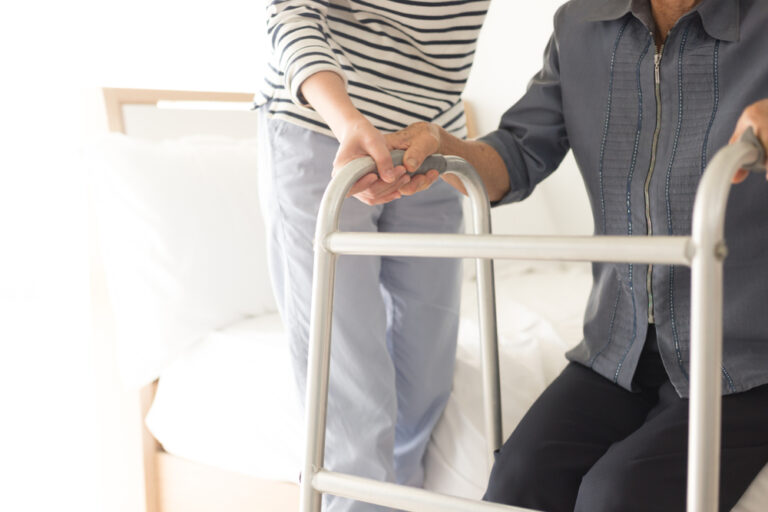by ANNABEL COOPER
For those who have suffered a stroke, life is unlikely to ever be the same again. Mark Selley and Sherlene Simmons bravely share their stories of survival, struggle, determination and strength to show that it is possible to defy the odds and fight back.
Mr Selley was only 39 years old when he had his stroke on 25 November 1991.
“My stroke was caused from an accident,” he began. “I had slipped on some oil down at the marina and my leg had skidded into a cast iron tow bar at the back of my truck. It hurt like hell!”
The accident caused a blood clot to travel from his leg to his brain, resulting in a stroke later that night. “I had no idea what was happening,” he continued. “I’m not a medically inclined person and hadn’t really been to any doctors. I was a powerboat racer, fine and fit.
“When I woke up in the middle of the night, I couldn’t move. In trying to get out of bed, I fell and hit my head, which must have dislodged the clot and in a few minutes, I got some feeling back again. When I was in the bathroom it happened again and I fell on the floor; then it dislodged so I could get back to bed.”
Mr Selley called the hospital in the morning, but he said, “no one really understood how someone my age could have this.”
One of the tests he had to undergo was blood viscosity and it turned out that the cause of his stroke had actually begun years earlier.
“I’d been in the restaurant business for many years,” he said. “In those days, we didn’t have all the filtration for cigarette smoke. I was never a smoker myself. It was all passive. My blood was getting like jelly. The liability was a lot greater because of my exposure to second hand smoke.”
In another way however, he was lucky. Doctors discovered he had a hole in his heart, which meant the clot travelled through the hole to his brain, bypassing his lungs. Had it gone to his lungs, he was told he wouldn’t have survived.
Mr Selley was flown to the New England Medical Centre then later transferred to Spaulding Rehabilitation Hospital in Boston, where he was told he would never walk again.
“That in itself was an incentive for me to walk again,” he said. “I’d just had twin boys, born in August 1990. That was my leading incentive to go all out and get over this thing.”
With medical professionals, friends and family battling the insurance company on his behalf, and supporting him throughout, as well as ‘illegal’ practice up and down the building’s stairwell when the security guards weren’t looking, he needed only a walker and cane by the time he left Boston four months later.
Mr Selley is still paralysed on his left side and uses a walking cane from time to time, but does as much as he can without it.
His experience taught him a lot, in particular that stroke victims and their families needed more support. This is why he founded the Bermuda Stroke & Family Support Association.
“In hindsight, I would have liked to have known there was a resource available to get the best advice about what was going on with me,” he said.
He now knows that the “first and best thing you can do is get yourself to a medical centre as fast as possible. There’s a drug which can be injected within three hours of a clotted stroke that can break the clot. That can help to prevent paralysis.”
One of the many people Mr Selley’s organisation has helped is Sherlene Simmons, 78, who had her stroke on 22 March 2002.

At the time, she worked at Pembroke Rest Home and had been feeling stressed:
“I was sitting outside on the bench and all of a sudden I couldn’t move my arm and leg. They sent for the ambulance, I went to the hospital and they got my blood pressure down. Then, when I went home, I ate some soup and the soup had too much salt.”
Ms Simmons then had another stroke and ended up back in hospital. “Salt and stress will do it,” she said. “I don’t eat salt anymore.”
In the aftermath of her stroke, Ms Simmons couldn’t talk properly or use her right arm, and received therapy at King Edward VII.
“I had to get the therapist to teach me how to talk again,” she explained. “I was never scared that I wouldn’t get my speech back, because I was doing what the therapist was telling me to do.
“It happened on my right-hand side and I was right-handed so I have to use my left hand to sign my name now. Most of the time I get people to write out what I need because it takes me a while to use my left hand.
“I had to learn a lot of things for myself because I couldn’t use my right arm and I still can’t use it that much.”
Her speech however, she said, is back completely.
Looking back, Ms Simmons said one of the early warning signs was her high blood pressure and she now takes a pressure pill morning and night.
She is also careful with what she eats, takes regular exercise, tries not to get stressed, prays and appreciates her loved ones more than ever.
“I don’t drink, I don’t smoke. I steam my vegetables every day,” she said. She also drinks plenty of water, enjoys quinoa and fresh fruit, and avoids fried food.
“I believe in the Lord Jesus Christ. He helps me every day. I’m blessed and I’m thankful. I do everything. The only thing I cannot do is put my chain on because my arm doesn’t reach up that far.”
For anyone else going through a similar experience, Ms Simmons advised them to find a hobby. For her it is regular walks and working in her garden. Most poignantly, however, the mother of six, grandmother of 10 and great grandmother of three also said:
“Be sure to tell your children and grandchildren that you love them every day. Be sure to tell people you love them.”

